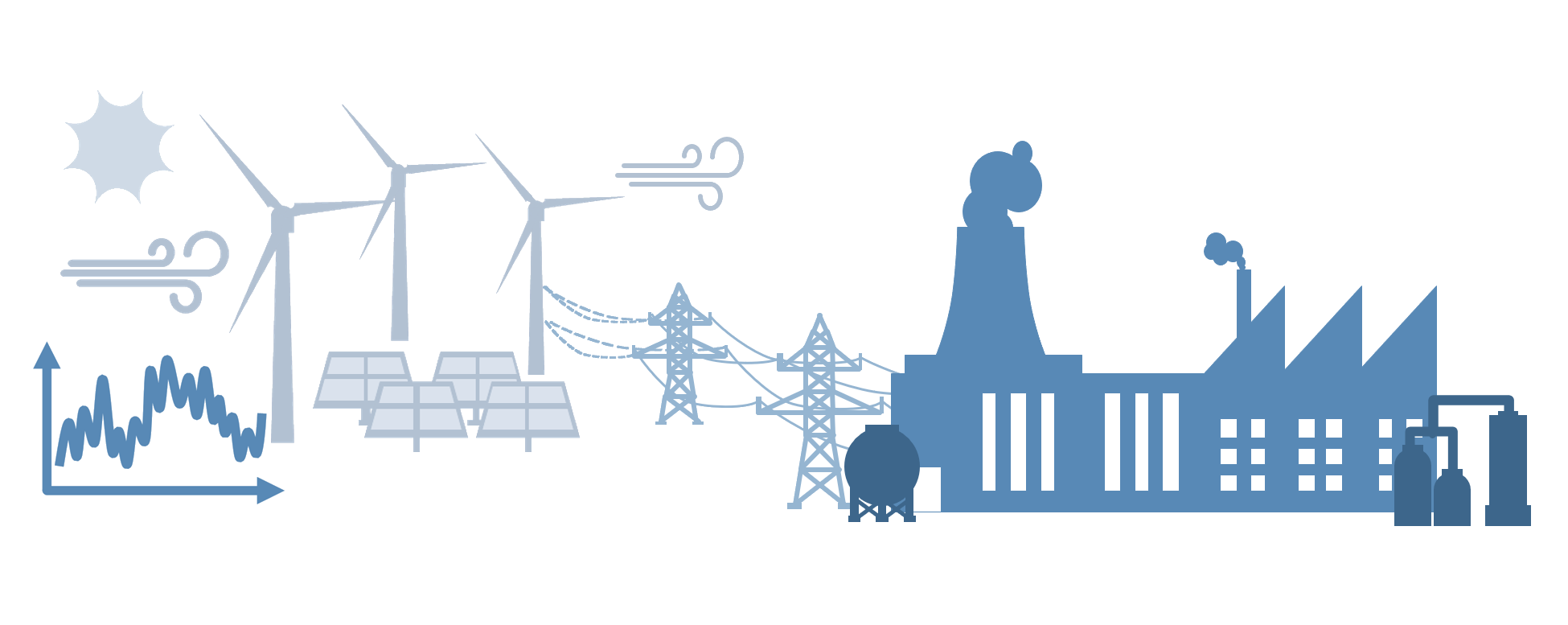UQ in Future Energy Systems#
This article is part of a series: Uncertainty quantification in Future Energy Systems. The following aspects are covered
Sources of uncertainty
Describing and analyzing uncertainty
Dealing with and operating energy systems under uncertainty

We envision the energy system of the future to be sustainable, reliable, and affordable. However, sustainable energy systems with large shares of renewables are subject to major uncertainties in renewable energy generation. These uncertainties have to be considered by energy suppliers and grid operators to ensure an affordable, reliable system design and operation. In this series, we describe
sources of uncertainty in energy systems,
how they can be analyzed and described, and
how they can be handled during system operation.
In the following, we give illustrative examples for these three points.
Renewable energy is mostly generated from highly volatile and uncertain sources, namely wind and solar irradiation. Wind and solar energy display strong temporal non-Gaussian distributions. The distribution of wind speeds can be captured by a Weibull distribution that has considerably heavier tails than a Gaussian distribution. Furthermore, wind speeds are persistent with respect to a few hours. In contrast, solar power generation is highly dependent on daily and seasonal cycles and has a high, underlying short term variability and intermittency. Due to the stochastic nature of renewable energy generation, spatial and temporal uncertainties of electricity generation increase and forecasting errors have to be considered for the design and operation of an energy system.
Analyzing and describing uncertainty in power supply is crucial for power grid operators. The power grid operator has to match power supply and demand at all times to prevent black-outs and ensure a stable power supply. A stable power system requires that the grid frequency remains inside a safety margin around a reference frequency of 50Hz in Europe. The frequency is directly affected by imbalances in generation and supply that can be described by both stochastic and deterministic effects. Understanding these effects is important for the grid operator in order to counteract frequency imbalances.
Operating under uncertainty is a challenge for industrial processes. An increasing share of industrial processes can react to electricity availability and electricity prices by adjusting the production level, thus either leading to over- or underproduction over a limited period of time. This so-called demand response is incentivized by time-varying electricity prices that are determined on short-term electricity markets. Understanding price patterns and considering price uncertainty in decision making are important for the process operators to determine cost-optimal production schedules.
Overall, many questions arise: What are the major sources of uncertainty in power systems? How can these uncertainties be quantified and utilized in practice? How can local and national energy systems handle the uncertainty while ensuring reliable and affordable operation? How can industrial processes adapt their electricity consumption according to uncertain electricity supply?
Thus, this series elaborates on these topics to give a brief overview over the research field.
Contributors#
Philipp Böttcher, Manuel Dahmen, and Berit Zeller-Plumhoff
